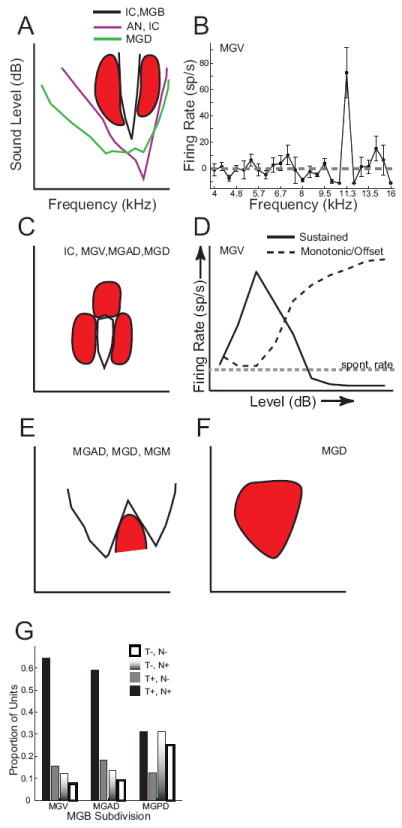Figure 3. Main tone frequency response area shapes in different MGB subdivisions.

Schematic frequency response areas are shown with frequency along the x-axis and sound level along the y-axis. Axes in A apply to A, C, E, F. Responsive regions fall above (A,,E) or within the area (C) bounded by the solid lines and not within the red inhibited regions. A: In the auditory nerve (AN) and in many IC neurons, frequency tuning widens with sound level, especially on the low-frequency side. In MGV, MGAD, MGM and IC, many neurons have narrow excitatory tuning that is flanked by lateral inhibition (red shapes). If the rate-level function is monotonic or plateaus, the top of the FRA will be open. In MGD, frequency tuning for tones is often broad (green line). B: Example of a narrowly tuned MGV neuron (adapted from Bartlett and Wang 2011), showing firing rate as a function of tone frequency. With 1/12 octave spacing between tones, only one tone was strongly excitatory, and this was flanked on both the low and high frequency sides by strong inhibition that made the firing rate go below the spontaneous rate (gray dashed line). C: Similar narrow tuning as in A (solid black lines), but the rate-level function is non-monotonic, such that firing rates decrease for high sound levels. This is likely to be due to inhibition at high levels (red shape at top of FRA). This means that there is a restricted frequency and level range over which there is evoked excitation. D: Examples of sound level tuning in MGB neurons. The dashed line shows a monotonic increase in rate with increasing sound level, which can be found in all species to varying degrees and is found in lower auditory nuclei. The solid line shows a non-monotonic rate-level curve, where firing rate rises to a maximum at the neuron’s best level and then decreases for louder levels, sometimes becoming inhibited below the neuron’s spontaneous rate (gray dashed line). Non-monotonic responses are prevalent in primate MGB, and in these units, there is often an offset response at higher sound levels that rises monotonically, which is also represented by the black dashed line. In other neurons in MGD, tones generate inhibition that may or may not be followed by an offset response (not shown). E: MGAD, MGD, and MGM neurons have a moderate proportion of multi-peaked FRAs, with two or more excitatory peaks separated by elevated thresholds or inhibition. These multipeaked FRAs can also be non-monotonic (not shown) F: Some MGD neurons are only inhibited by F: Proportion of neurons responsive (T+) or unresponsive (T-) to tones and neurons responsive (N+) or unresponsive (N-) to noise for MGV, MGAD and MGPD (MGD). MGPD neurons had a much higher proportion of units that were inhibited or unresponsive to tones and noise (T-,N-) or only responsive to noise (T-,N+) compared to MGAD and MGV.
